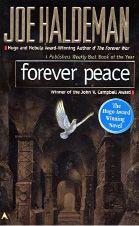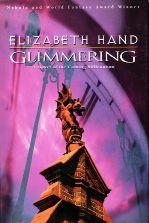Science Fiction: The 101 Best Novels 1985-2010 (28 page)
Read Science Fiction: The 101 Best Novels 1985-2010 Online
Authors: Damien Broderick,Paul di Filippo

“Well, folks. I guess our distinguished visitor doesn’t need much of an introduction to you all—” Scattered nervous giggles at that…. “Uncle Sky Coyote, I’d like to introduce Nutku, spokesman for the Canoemakers’ Union…. And this is Sawlawlan, spokesman for the United Workers in Steatite.” Another one wearing lots of money, with big hair and a sea-otter cape. “And Kupiuc, spokesman for the Intertribal Trade Council and Second Functionary of the Humashup Lodge. And this is Kaxiwalic, one of our most successful independent entrepreneurs.”
There’s not a breath of condescension or mockery in this. Baker shows us worlds ancient and recent as if we live in them, and for all their startling familiarity they remain hauntingly strange. This is wonderful storytelling, cut tragically short by Baker’s early death.
[1]
A useful, detailed account of the Dr. Zeus, Inc. project and its many operatives and conspiracies is
http://en.wikipedia.org/wiki/Dr._Zeus_Inc
. but this should not be consulted before reading the novels.
50
Joe Haldeman
(1997)

JOE HALDEMAN,
2010’s SFWA Grand Master, is sf’s consummate story-teller, his tales always illuminated by a moral consciousness. Far from turning them dull or preachy, this is what makes his fiction memorable, decade after decade. Half a lifetime ago, Haldeman recast the Vietnam conflict in his memorable Hugo, Nebula and Locus award-winner,
The Forever War
(1975). His elite, technically-savvy troops battled an alien foe across light-years and centuries. Poignantly, each engagement cut them off from Earth by hundreds of years, as relativistic velocities flung them into their own ever-more incomprehensible future. At the end of the thousand year war, it all turned out to have been a mistake. And new humanity, now a standardized group-mind named Man, has more in common with the clone-like alien Taurans.
Where can damaged veterans go in a universe like that? Haldeman returned in
Forever Free
(1999), a quarter century later in both reality and narrative time-line, to probe the consequences of the peace. William Mandella and his love Marygay Potter accepted Man’s offer of a world sardonically named Middle Finger (“up yours” or, even more frankly, MF). Here, unreconstructed relics of the war huddle from a universe repellent in its inhuman benevolence. MF proved to be the sort of welcome-home Vietnam veterans enjoyed—cold and hard. Technology, surprisingly, is not greatly advanced after a millennium. William and Marygay, and their adolescent son and daughter, now aquaculture fisherfolk, live in ice-bound rural Paxton (“peace town”), chafing under Man’s benign supervision. If Forever War was a caustic reply to Robert A. Heinlein’s Starship Troopers, Forever Free seemed ready to follow his Methuselah’s Children: a stolen starship, a run for the edge of the galaxy, freedom boldly purchased. But Haldeman had larger fish to fry.
Might a wily, squabbling group of aging veterans defeat the omnipresent custody of their evolutionary superiors? Or was Man’s non-telepathic group mind a blind end? If Mandella and his conspirators managed to flee relativistically into the remote future, what could they possibly seek that will not be worse than their current anguished alienation? Might they find an answer to the horrors of the Forever War itself, and all of human history’s suffering? The plot maneuvers of
Forever Free
are abrupt and startling. One conceptual breakthrough after another tears open our understanding of this universe, until finally Haldeman deploys a kind of Gnostic explanation for the world’s pain. Gnosticism is a faith with few adherents these days, perhaps because it is not very satisfying—and its claims are just as dubious in fiction (except, perhaps, in Philip K. Dick’s). The gratuitous cruelty that climaxes
Forever Free
, and its equally gratuitous redemption, lurches from comic-book excess to world-weary acceptance. The augmented fighting suits of this quasi-trilogy morphed into a stifling enclosure of the spirit.
A far more satisfying thematic sequel to
The Forever War
already existed, the subject of this entry—
Forever Peace
. Set in a different near-future (Haldeman’s prefatory note calls it “a kind of sequel, though, examining some of that novel’s problems from an angle that didn’t exist twenty years ago”), this 1997 Hugo, Nebula and Campbell Memorial award-winner proposed a cure for war and hatred in the tradition of humanistic sf, notably Theodore Sturgeon’s: just the sort of empathic group mind that Mandella and his veteran friends found so creepy. It was if Haldeman restlessly tried out all the variants on salvation, determined to keep us entertained as he did so. Perhaps he is telling us that suffering is simply built-in to the cosmos, laced through it, unavoidable except at the cost of extinguishing the burning spark of individual awareness.
Certainly the guilty pain of inflicting misery and death on a helpless foe nearly drives Harvard PhD physicist and part-time draftee warrior Sergeant Julian Class to suicide. In a convincing extrapolation of the remote-controlled UAVs now piloted to fatal destinations in Afghanistan by specialists in the US mainland, the wealthy nano-rich, warm fusion-powered Alliance in 2043 fight the Ngumi or “pedros,” Third World guerillas, using “soldierboys,” lethal robots run long-distance via jacked-in VR immersion.
Haldeman is not writing for the squeamish:
I shouted “Drop it!” but she ignored me, and the second shot disintegrated her head and shoulders. I fired again, reflexively, blowing apart the M-31 and the hand that was aiming it, and turning her chest into a bright red cavity. Behind me, Amelia made a choking sound and ran to the bathroom to vomit.
The proverbial link between sex and violence is explicit—“her lower body was in a relaxed, casually seductive pose”—and jacking in is great for sex even when you’re not killing someone: “when we were jacked it was something way beyond anything either of us had ever experienced. It was as if life were a big complex puzzle, and we suddenly had a piece dropped in that nobody else could see.”
Adapting the cyberpunk convention, Haldeman suggests a more optimistic spin: being mentally wired together in a sort of hive mind for several weeks disables a hunter/killer platoon’s capacity to kill. Ultimately, this process will lead to the emergence of
Homo sapiens pacificans
, whose capacity to work together in mutual sympathy will ensure the subspecies’ replacement of our current squabbling humankind.
In this partitioned world, even more extremely divided between haves and have-nots, an apocalyptic cult, the Enders, wishes to hasten the death not only of all humans but of the entire universe. Only in this way can a corrupt, fallen world be saved. Making this proposition all too realistic is the Jupiter Project, a sort of mega-Large Hadron Collider. Julian Class and his lover Amelia Harding learn of this experiment that within weeks will trigger a new Big Bang, destroying the cosmos. Their frantic analysis of this ultimate existential threat is rejected by the leading
Astrophysical Journal
, blocked by Enders in key places and their leaders, the Hammer of God. This is undoubtedly extreme and melodramatic—it’s hard to imagine how even a nano-enabled society could dismantle and repurpose a moon of Jupiter within the next few decades—but serves the purpose admirably of pumping up the stakes in Haldeman’s quest for a solution to human aggressiveness.
Forever Peace
provides a rousing counterbalance to the bleak view of humanity’s future in both
Forever War
and
Forever Free
.
51
Elizabeth Hand
(1997)

ASTUTE CRITIC
, unashamed craftsmanly novelizer of films, artist supreme in her own non-shared universes, Elizabeth Hand has emerged since her debut novel
Winterlong
as one of the finest voices of her generation, a cohort of writers who all debuted more or less in the middle 1980s. Unlabeled and uncategorized so far by historians of the genre—other than those who formed the cyberpunk and humanist camps—this generation has emerged over the span of this survey to be the defining voices of the field, taking up the reins in large part from any still-working survivors of earlier ages, and driving the team of speculative horses in a noticeably different direction.
Hand’s gorgeously crafted fiction generally falls into slipstream categories, and of late has even ventured into pure naturalism (
Generation Loss
). But she proved herself to be an expert hard-edged speculator with the
Glimmering
and selected other works.
For this apocalyptic saga of a world gone off the rails, Robert Chambers’s cult masterpiece,
The King in Yellow
, serves Hand in an untraditional, non-Lovecraftian way as a symbol of fin-de-siècle decadence and spiritual entropy betokening the grim ride ahead for humanity in a collapsing ecosystem.
This book in Hand’s canon was preceded, tellingly enough, by her novelization of Terry Gilliam’s film
12 Monkeys
, and
Glimmering
is a clear kissing cousin to that cinematic biological Götterdämmerung.
Hand economically sets up her premise in a two-page prologue: in the year 1997 (but not precisely our historical 1997, rather a uchronic version), an overdose of new ozone-destroying chemicals, coupled with a massive methane release from polar regions and an enormous solar flare, trigger a change in Earth’s atmosphere, soon dubbed the Glimmering. Moiré sheets of cold colored flames replace our natural celestial view, and all electrical equipment in use at the instant of ignition is shorted out. This is clearly the end of civilization as we’ve abused it. Major adjustments are demanded. But with a blind stubbornness, the mass of mankind continues to hang on to old habits.
Hand’s use of this particular trope—celestial phenomena changing our terrestrial physics—solidly allies her with such hardcore forebears as Fredric Brown (“The Waveries”) and Poul Anderson (
Brain Wave
) and might very well have had an influence on the similar premise of S. M. Stirling’s
Emberverse
series.
One of those with his head in the sand—circa 1999, two miserable years into the disaster—is John Chanvers Finnegan, a gay man who is heir to a dwindling family fortune (initially founded on the sale of Victorian glass Xmas ornaments, ironically echoing the current gaudy appearance of the Earth itself). Finnegan lives in a decrepit Yonkers mansion with his elderly grandmother and house-keeper. The fact that he is dying of AIDS is understandably more vital to him than the world’s demise. What will shake Finnegan out of his semi-charmed life? A visit and miraculous gift from his mysterious friend, Leonard Thrope, a devil-may-care Byronic artist—or “sociocultural pathologist”—intent on bearing witness to death and dying in all its forms.
Soon, Finnegan is reluctantly hosting stray pregnant waifs, seeing tangible ghosts, feeling love reawaken, and beginning to realize that he has been nominated for a larger role in the coming millennium than he had ever wished to play.
Two motifs here signify Hand’s devotion to a pair of masterly writers who have influenced her greatly. The decaying, life-stuffed mansion speaks to John Crowley’s
Little, Big,
while the persistence-with-distortion of cultural norms and personal relationships amidst urban dissolution harks to Samuel R. Delany’s
Dhalgren
. Both Crowley and Delany have played a huge part in the formation of Hand’s own esthetic.
Hand, of course, excels at her gritty depiction of a world on the skids. No stranger to postapocalypses ever since her
Winterlong
and its sequels, she has a keen knack for conveying the psychic adjustments people must make to continue surviving in the midst of chaos. Unlike some Irwin Allen panoramic disaster,
Glimmering
has a smallish cast of major characters, allowing Hand to build up in great and subtle detail their realistic portraits. The visceral thrills of life in the ruins are balanced precisely by Hand’s loving attention to individual psyches.
With a dollop of Lucius Shepard’s
Green Eyes
(and is there a sly allusion to Shepard in the character of music manager Lucius Chappell?), a smattering of Mark Helprin’s
Winter’s Tale
, a pinch of Disch’s
334
, and Hand’s own salty broth and spices,
Glimmering
is a unique and tasty dish that might be called Ragnarok Ragout.
